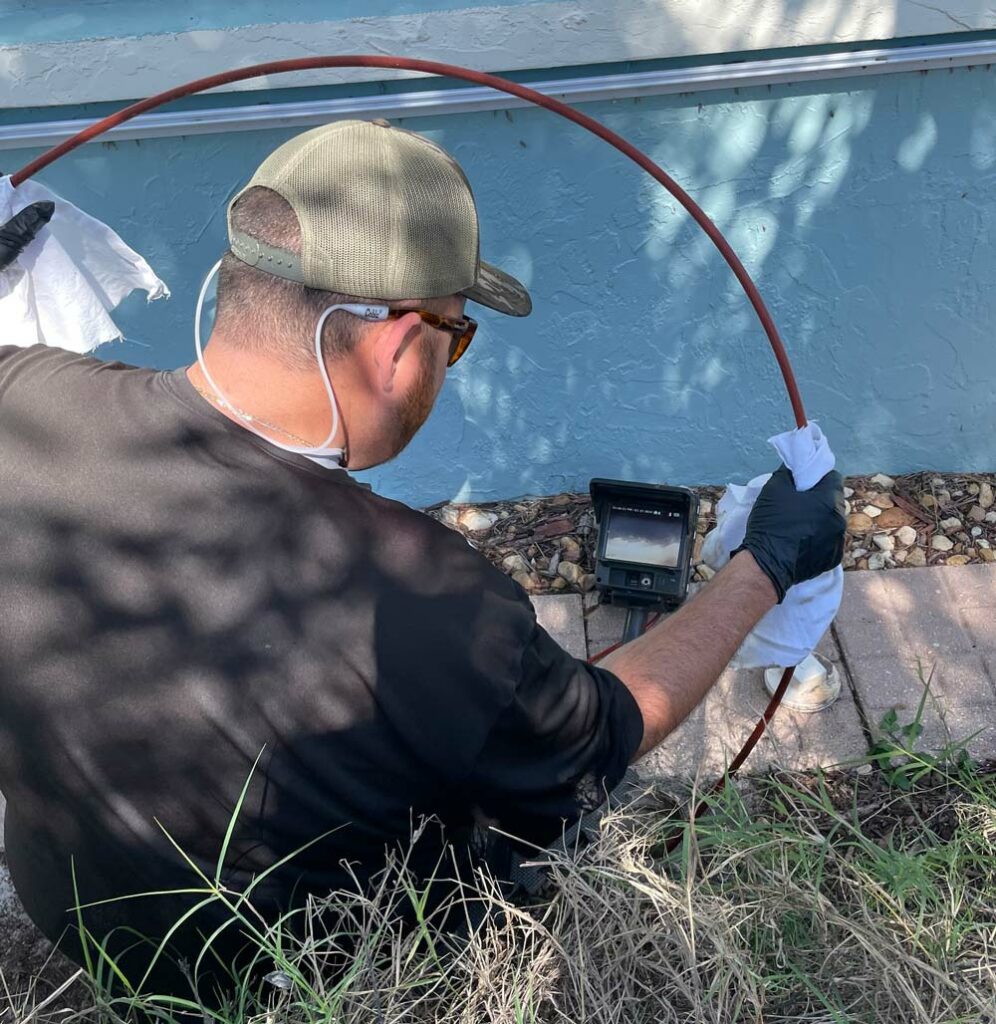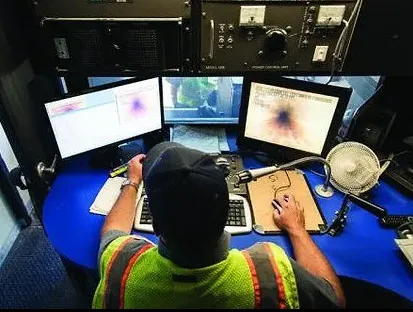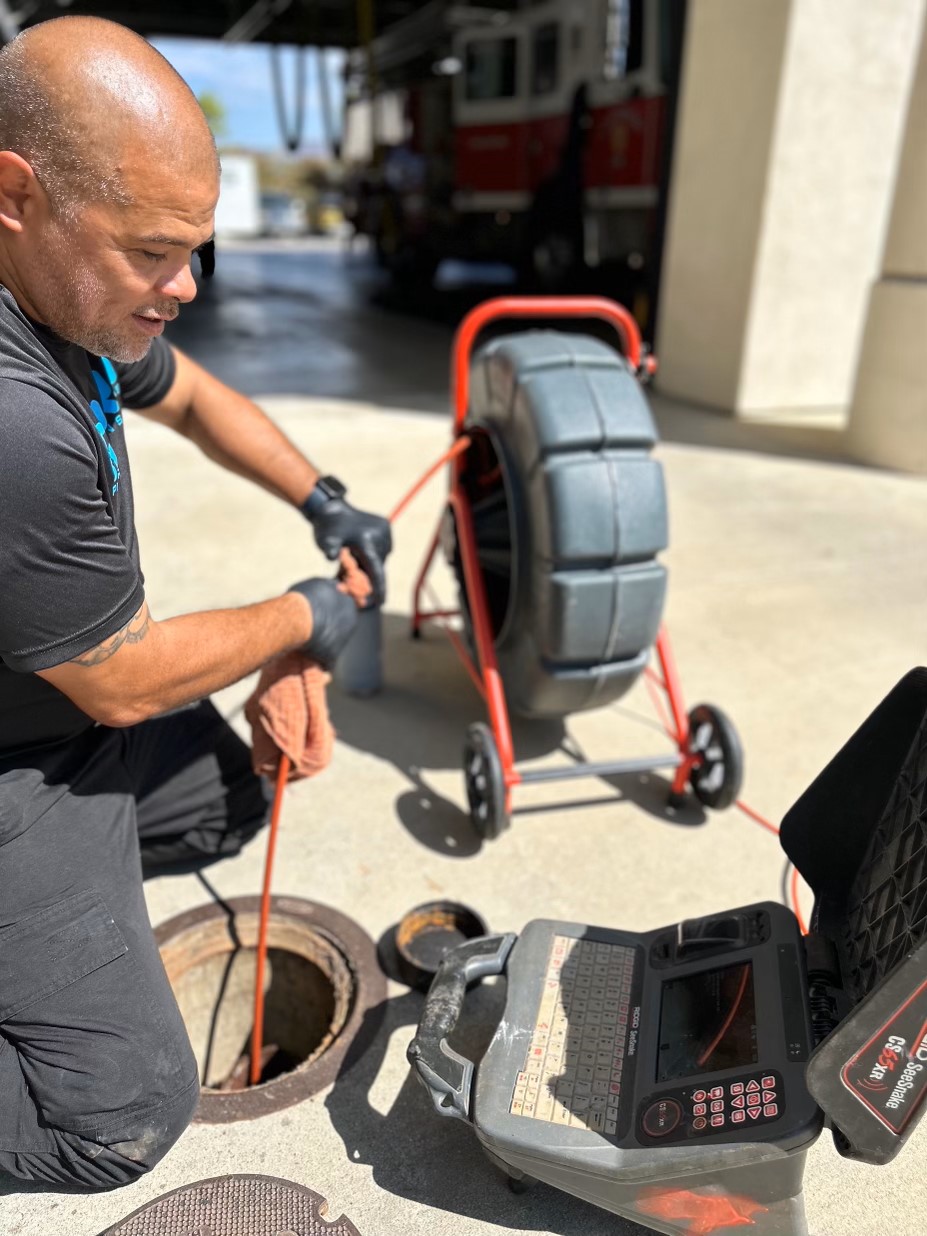Advancements in Diagnostic Tools for Pipe Restoration
The landscape of pipe restoration is undergoing a transformation, thanks to the advent of cutting-edge diagnostic tools. These innovations have drastically improved the precision and efficiency of pipe assessments, moving away from the disruptive and often imprecise traditional methods that required extensive excavation.
A prime example of such innovation is the deployment of high-definition CCTV cameras. These sophisticated devices can be snaked into pipes, offering real-time visual sewer inspection capabilities. Technicians can now identify issues such as cracks, blockages, and corrosion from within, circumventing the need for invasive techniques.
Another leap forward comes in the form of ground-penetrating radar (GPR). This technology can sense and map out the intricacies of underground pipe networks, providing valuable data without the need to disturb the ground above. GPR is especially beneficial when planning large-scale restoration projects, as it helps to avoid unnecessary digging.
Laser profiling has emerged as a multifaceted tool, adept at both diagnosing and analyzing pipe conditions. By projecting a laser into the pipeline, it gathers data that can be used to construct a three-dimensional model of the pipe’s interior. This model reveals the pipe’s dimensions and any irregularities, some of which might not be detectable by visual inspection alone.
Ultrasonic testing is another diagnostic powerhouse, utilizing high-frequency sound waves to detect variations in pipe material properties. This method is revered for its ability to identify thinning walls and precisely locate leaks, all without interrupting the pipe’s operation.
Acoustic sensors are also making waves in the industry. These devices can detect the faintest noises within pipes, pinpointing leaks early on and mitigating the risk of larger issues down the line. Their increasing sensitivity is a testament to technological progress in leak detection.
Lastly, the concept of ‘smart pigging’—originally used in the oil and gas sector—is now gaining traction in water and sewer pipe restoration. These intelligent devices traverse pipelines, employing a range of nondestructive testing techniques to evaluate the pipe’s condition from the inside.
Collectively, these diagnostic tools are reshaping the pipe restoration industry. They are minimizing the likelihood of unexpected failures, narrowing down the extent of necessary repairs, and enabling more strategic, cost-effective interventions. The end result is a service that is less disruptive, more environmentally friendly, and ultimately more reliable for the consumer.
Each of The Pipe Restoration Solutions Locations offers HD Video Camera Sewer Inspections.
Enhancements in Pipe Cleaning and Coating Technologies
The evolution of pipe cleaning and coating technologies has been pivotal in safeguarding the longevity and functionality of piping systems. Today’s methods not only cleanse pipes more thoroughly but also apply advanced coatings that fortify pipes against future damage and decay.
Hydro jetting, a stalwart in the cleaning arsenal, has been refined with higher pressures and custom nozzles capable of dislodging diverse types of debris and build-up. This eco-conscious technique employs pressurized water to cleanse pipes, eschewing harsh chemicals in the process.
When faced with more stubborn blockages, the industry now turns to advanced mechanical cutting tools. These devices, which can be guided by cameras for enhanced precision, are adept at navigating through complex pipe networks to remove intrusive tree roots and hardened deposits that hydro jetting may leave behind.
Following a thorough cleaning, the application of a protective coating is often the next step. Epoxy pipe lining stands out in this domain, offering a trenchless solution to rehabilitate pipes showing signs of age or damage. The latest epoxy formulations cure faster and bond more robustly, effectively creating a new pipe within the old one.
Polyurea coatings are another breakthrough, boasting rapid curing times and versatility in application conditions. This makes them especially suitable for projects where downtime must be kept to a minimum.
Thermal spray coating is a state-of-the-art technique that applies molten or semi-molten materials onto pipe surfaces, providing exceptional protection against industrial wear and tear.
Another notable advancement is UV-cured-in-place pipe (CIPP) lining. This method employs UV light to cure resin linings quickly, significantly reducing the time and energy required for pipe rehabilitation. It is particularly advantageous for water pipes, as it eliminates the need for heat in the curing process, which could otherwise affect water quality.
For metallic pipes, cathodic protection systems have been refined with better anode materials and remote monitoring capabilities, ensuring long-term defense against corrosion with less need for manual checks.
These enhancements in cleaning and coating technologies are empowering pipe restoration services to deliver solutions that are not only more enduring and economical but also less intrusive. By extending the life of existing pipes and minimizing the environmental footprint of restoration work, these modern techniques are a boon to both infrastructure sustainability and customer satisfaction.
We Service Nationwide With 6 Local Offices to Serve You
Integration of Automation and Robotics in Pipe Restoration
The advent of automation and robotics has ushered in a new era for pipe restoration, transforming it into a safer, more precise, and efficient process. These technological marvels are now at the forefront, undertaking tasks that were once perilous and labor-intensive for humans.
Consider the advanced robotic inspectors, equipped with cutting-edge cameras and sensors, that traverse the labyrinth of pipes beneath our feet. These autonomous explorers deliver high-resolution imagery and vital data directly to operators, enabling swift identification of structural issues without the need for direct human exposure to potentially dangerous environments.
Robots are not just for inspection; they are also becoming the craftsmen of pipe repair. With the ability to apply coatings, execute spot repairs, and reline pipes using cured-in-place pipe (CIPP) technology, these automated workers ensure uniformity and quality that manual methods may struggle to match.
The versatility of crawler robots is particularly noteworthy. These adaptable machines can navigate pipes of varying sizes and configurations, equipped with an array of tools to tackle different restoration challenges. Whether it’s cutting away intrusions or evenly applying sealants, these robots are multi-skilled operatives in the subterranean world of pipe restoration.
In the realm of trenchless restoration—a method that minimizes excavation—self-propelled robotic systems shine. They slip into pipes through existing access points and, under remote guidance, carry out repairs with minimal surface disruption. This is especially crucial when installing CIPP liners, where precision is key to ensuring a successful seal.
Emerging technologies, such as swarm robotics, hint at a future where teams of mini-robots collaborate to inspect and repair extensive pipe networks more efficiently than ever before. Moreover, the integration of the Internet of Things (IoT) allows for remote operation and predictive maintenance, with algorithms scheduling services based on insights from sensor-laden robots.
In essence, the integration of automation and robotics is redefining the pipe restoration industry, setting new standards for safety, diagnostic accuracy, and repair quality. These innovations are helping service providers rise to the challenge of delivering swift, non-intrusive, and durable pipe restoration solutions.

Impact of Software on Pipe Restoration Services
The software has become the backbone of the pipe restoration industry, streamlining every facet, from initial diagnostics to customer engagement. This digital transformation is enabling service providers to execute projects with unprecedented precision and efficiency.
In the diagnostic arena, the data harvested by robotic inspectors is meticulously analyzed by sophisticated software. These programs, often powered by machine learning, grow increasingly adept at detecting subtle signs of wear and potential failure points within pipe systems.
Project management software is the conductor orchestrating the symphony of restoration tasks. It manages schedules, allocates resources, and oversees logistics, ensuring that each project phase progresses without delay. The integration of GPS and RFID technologies further streamlines equipment tracking, guaranteeing that the right tools are in the right hands at the right time.
Client relations are also reaping the benefits of software innovations. Through dedicated portals, customers can monitor their project’s status in real time, voice their concerns, and provide feedback, fostering a transparent and responsive service environment.
When planning and executing repairs, the precision of CAD and GIS software is indispensable. These tools allow for accurate mapping and simulation of pipe networks, ensuring that restoration strategies are tailored to the unique challenges of each system.
Post-restoration, asset management software takes center stage, maintaining detailed records and facilitating proactive maintenance. This shift towards predictive upkeep is a game-changer, potentially extending the life span of pipe systems and optimizing service intervals.
Software’s role extends to regulatory compliance, ensuring that restoration activities adhere to environmental and safety standards. This digital oversight simplifies the documentation and reporting processes, maintaining accountability and transparency.
In summary, software’s impact on pipe restoration services is transformative. It not only elevates operational capabilities and customer satisfaction but also contributes to the industry’s knowledge base, paving the way for smarter, more sustainable pipe management practices. With software at the helm, the pipe restoration industry is well-equipped to navigate the complexities of today’s infrastructure challenges.
Advancements in Training for Pipe Restoration Professionals
The landscape of pipe restoration is ever-evolving, with new technologies shaping the need for advanced skill sets among industry professionals. To keep pace with these changes, training programs are constantly being refined and expanded.
In the realm of immersive learning, Virtual Reality (VR) and Augmented Reality (AR) are revolutionizing how technicians master their craft. These cutting-edge tools create lifelike simulations of on-the-job challenges, providing a risk-free platform for honing skills on intricate equipment and in complex environments.
The rise of online learning platforms has introduced a new level of convenience and accessibility to professional development. These digital classrooms offer a wealth of resources, from interactive tutorials to certification courses, ensuring that technicians can maintain and enhance their expertise on a flexible schedule.
The curriculum for pipe restoration professionals now extends beyond the physical aspects of the job to encompass data interpretation and software proficiency. Mastery of these digital tools is crucial for optimizing project outcomes and implementing proactive maintenance strategies.
Manufacturer-specific instruction is another cornerstone of contemporary training. Given the proprietary nature of many restoration tools, manufacturers offer comprehensive training to ensure that their equipment is used safely and effectively.
Sustainability and environmental stewardship are also becoming integral to training programs. Technicians are learning to apply eco-conscious practices and navigate the complexities of environmental regulations, ensuring that their work aligns with green initiatives.
Traditional apprenticeships continue to play a foundational role in the transfer of tacit knowledge, now enriched by these modern educational tools. This blend of old and new learning methods equips professionals with a robust set of skills, ready to tackle the multifaceted demands of today’s pipe restoration projects.
Environmental Considerations and Compliance in Modern Pipe Restoration
Environmental stewardship is a cornerstone of contemporary pipe restoration, with the industry embracing practices that protect our natural world while adhering to a myriad of regulations.
Trenchless technologies stand at the forefront of eco-friendly restoration methods. These innovative approaches, such as Cured-in-Place Pipe (CIPP) and pipe bursting, significantly reduce the environmental impact by eliminating the need for extensive excavation.
Material selection has also evolved, with a shift toward substances that are less harmful to the environment. Developing safer epoxy resins and exploring sustainable materials like bio-based resins exemplify the industry’s commitment to minimizing ecological footprints.
The strategic use of predictive analytics aids in establishing maintenance schedules that are not only efficient but also environmentally conscious. This approach ensures that restorative actions are taken judiciously, avoiding unnecessary interventions and conserving resources.
Education on environmental compliance is now a staple in training programs, equipping technicians with the knowledge to perform their duties responsibly. This heightened awareness is crucial for minimizing the environmental impact of restoration activities.
Proper waste management is another critical component, with stringent regulations governing the disposal of materials and byproducts. Compliance with these regulations is meticulously managed through environmental management systems that document adherence to legal standards.
Navigating the complex web of environmental legislation requires expertise that often extends beyond the technical scope of service providers. As such, many enlist the aid of compliance officers or environmental consultancies to ensure that their operations are fully compliant with local and international laws.
Through the adoption of these environmentally conscious practices and technologies, the pipe restoration industry is not only improving its ecological footprint but also aligning with broader global sustainability efforts.
1. What is the significance of technology in the pipe restoration industry?
Advanced technology has revolutionized the pipe restoration industry by speeding up the repair process, improving the quality of work, and increasing job safety. State-of-the-art equipment also allows for high-precision diagnosing and repairing, minimizing disruption during operations.
2. How has technology changed pipe inspection procedures?
Before, inspections were typically invasive and time-consuming. With the advent of technology like CCTV cameras and sonar imaging, pipe inspections are now less invasive, more accurate, and efficient, reducing both time and potential property damage.
3. Are trenchless pipe repairs more efficient because of technological advancements?
Yes, trenchless technology has indeed revolutionized pipe repairs. By leveraging special equipment and methods like cured-in-place pipelining and pipe bursting, technicians can now rehabilitate pipes without extensive excavation, offering quick and efficient solutions.
4. How does advanced technology help in providing safer pipe restoration services?
Enhanced technology in pipe restoration helps in identifying the precise location of pipe damage, reducing the need for invasive procedures. Consequently, this reduces risks associated with these procedures, such as utility strikes or eventual collapse, ensuring safer operations.
5. What benefits does technology bring to consumers in pipe restoration services?
Technological advancements in pipe restoration present a plethora of benefits to consumers. These include reduced overall repair times, less property disruption due to non-invasive methods, increased repair lifespan, and cost savings because of improved efficiency.
6. Can technology influence the environmental impact of pipe restoration services?
Yes, with upgraded technologies, pipe restoration companies can perform more environmentally friendly services. Trenchless technologies reduce the need for extensive excavation, decreasing the carbon footprint and preserving the environment due to fewer requirements for repair or restoration materials.



